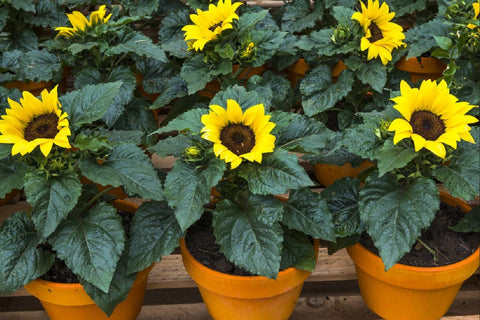Drought is one of the major environmental challenges facing the world, and planting drought-resistant plants is an effective way to solve this problem. This paper will introduce some drought-resistant plants suitable for planting in arid areas. These plants have the characteristics of adapting to arid environment, tolerating drought stress and retaining water, which provides hope for sustainable development of agriculture and environment.The following content also has some reference value for raised garden beds.
Succulents: Succulents such as cacti and agave are extremely drought resistant plants. They cope with drought conditions by storing water in their leaves and stems, able to survive in dry soil and maintain growth.
Desert Rose (Adenium obesum) : The desert rose is a perennial shrub from tropical and subtropical regions. It has tough leaves and thick stems that are able to adapt to high temperatures and dry conditions. Desert roses are known for their beautiful flowers and are ideal for gardening and landscape design in arid regions.
Alfalfa (Medicago sativa) : Alfalfa is a drought-resistant grass plant that is widely used in animal husbandry in arid regions. It has deep roots and drought tolerance, is able to absorb water and nutrients in dry soil, and provides high-quality feed for livestock.
Sea-buckthorn (Hippophae rhamnoides) : Sea-buckthorn is a shrub adapted to extreme drought and poor soil. It has the characteristics of salt and alkali resistance, wind erosion resistance and sand fixation, and can improve soil quality. Sea buckthorn fruit is rich in vitamin C and antioxidants, and has important economic and nutritional value.
Dianthus: Dianthus is a group of drought-tolerant floral plants that includes many different varieties. They have a short life cycle and an adaptable root system that is able to grow and flower in drier soils. Caryophyllous flowers are rich and colorful and are a common choice for flower beds and gardens in arid regions.
Evening primrose (Oenothera biennis) : Evening primrose is a wild flower with drought-resistant abilities. It has a well-developed root system that can absorb water in dry conditions. Evening primrose is rich in linoleic acid and antioxidants and is widely used in health supplements and herbal products. Its yellow flowers bloom at night, adding a charming color to gardens in arid regions.
Dimocarpus longan: The longan is a fruit tree native to tropical and subtropical regions and a plant adapted to arid environments. Its roots can penetrate deep into the soil to find water, and it has a high tolerance to drought. The fruit of Longan is delicious and rich in vitamin C and minerals, which is of great significance for the planting of fruit trees in arid areas.
Gazania rigens: Desert gold is a perennial herb that ADAPTS to dry and poor soils. With its tough leaves and bright flowers, it is ideal for flower beds and gardens in arid areas. The roots of desert gold are efficient at absorbing water from the soil and are able to survive strong sunlight.
The Dragon Cypress (Metasequoia glyptostroboides) : The dragon Cypress is a drought-tolerant evergreen tree native to China. It has a deep root system and dense foliage, which can grow in dry areas. The Longhua has high drought resistance and plays an important role in improving soil and water protection. It is also a popular garden tree used to green urban environments in arid areas.
Prickly pear (Opuntia ficus-indica) : Prickly pear, also known as cactus pear, is a drought-tolerant perennial shrub. Its leaves degenerate into a spiny structure, which can reduce water evaporation and has a strong drought tolerance. The fruit of the prickly pear is rich in nutrients and is widely used in food and beverage manufacturing. In arid areas, prickly pear is a plant choice with both economic and ecological value.
In drought-challenged environments, planting drought-resistant plants is a viable solution. The drought-resistant plants listed above have the characteristics of adapting to arid environment, tolerating drought stress and retaining water, which can provide strong support for agricultural production, landscape design and ecological restoration in arid areas. Further research and application of these drought-resistant plants will make important contributions to protecting the environment, improving soil quality and achieving sustainable development.









